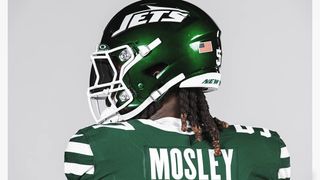When I started my first internship after graduating from high school in 2002, I had absolutely no idea what graphic design was. All I was interested in was marketing and economics.
Growing up in a little village in Germany gloriously named Poppenweiler (which translates to ‘Fuckville’), it was almost impossible to know about anything other than the standard professions: doctor, lawyer, farmer.
Neighbouring villages frequently amused themselves by slightly changing the village sign to a more pictographic version overnight – yes, feel free to let your imagination go wild – and, in retrospect, this was probably my first noticeable contact with graphic design, albeit on the more traumatising end of the scale...
What is the definition of graphic design? Ask Wikipedia and you’ll find the following: Graphic design is a creative process – most often involving a client and a designer and usually completed in conjunction with producers of form – undertaken in order to convey a specific message... to a targeted audience. It continues for a while, later adding: Various methods are used to create and combine words, symbols and images to create a visual representation of ideas and messages. Common uses of graphic design include identity, publications, advertisements and product packaging. For example, a product package might include a logo or other artwork, organized text and pure design elements such as shapes and colour, which unify the piece.
Are you kidding me – who wrote that? If that were my job description, I would quit today and go into organic farming. The truth is, there is no perfect definition of graphic design. Even design history can’t capture a clear picture, as it has with industrial, product and fashion design. It’s not as easily tangible.
Ultimately, there is no other industry that has more invisible and open borders than ours. The name ‘graphic design’ becomes obsolete. We have to understand the need to go beyond the conventional: beyond aesthetics, beyond the apparent preset borders and especially beyond our egos.
It’s our duty to make the world better, and it’s our responsibility to recognise that graphic design is not about crafts – craft should be taken as a given. We are authors, consultants, business people, explorers and sometimes psychologists, all at the same time.
In other words, we have the coolest job on the planet. And I’m going to go mad if one more design student shows up with a portfolio containing meaningless posters, CD covers, logos, logos applied on several things (some people call it branding), 50 illustrations, book covers and books with content they haven’t even created.
Is this any level of ambition? The words of Irish novelist and poet Oscar Wilde come to mind: “Anyone who lives within their means suffers from a lack of imagination.”
Here’s my free advice: get rid of the stick up your ass. Change the world. Make love. In the words of Ian Anderson of The Designers Republic, it’s all about: “Thinking and doing”. Only then do we have a realistic chance to be on a par with industrial, product and fashion design, and finally earn the recognition we deserve.
Delve beyond the aesthetics

Thank you for reading 5 articles this month* Join now for unlimited access
Enjoy your first month for just £1 / $1 / €1
*Read 5 free articles per month without a subscription

Join now for unlimited access
Try first month for just £1 / $1 / €1



